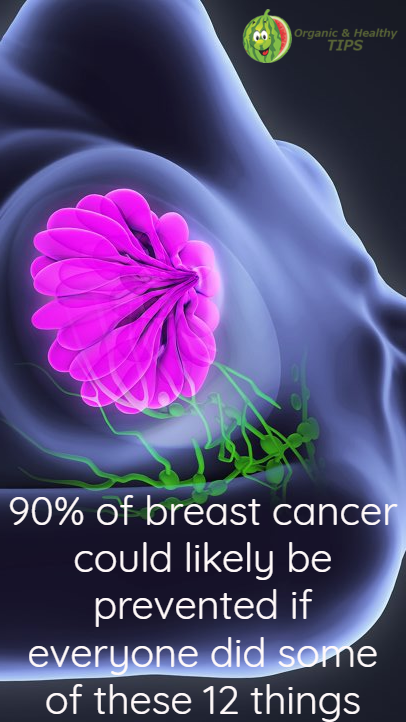Breast cancer is for sure one of the most dangerous diagnoses a woman can have. The mere mention of it conjures up images of death, despair, or at best, disfigurement.
According to breastcancer.org, one in eight women has the chance to develop the dangerous breast cancer in her lifetime, and nearly 40,000 women lose their lives to the disease each year.
With such odds stacked against you, what, if anything, can you do to prevent becoming a statistic? In truth, there are many measures you can take—each of which will help decrease your risk.
It’s of great importance to realize that less than 10 percent of all breast cancer cases have been thought to be related to genetic risk factors. The remainder—90 percent—appear to be triggered by environmental factors.
I strongly believe that cancer is preventable through appropriate lifestyle changes, such as cleaning up your diet, optimizing your vitamin D levels, exercising, and avoiding toxins from every source you can.
This means taking careful inventory of the household and personal care products you use, and the furnishings and other potentially toxic items you get into contact with on a daily basis. Toxic overexposure undoubtedly play a major role in cancer development, and recent studies are finally starting to shed light on the worst offenders.
Top Offenders

Their list of cancer-causing chemical groups to avoid, and their most common sources of exposure, includes the following. Another 27 different carcinogens that do not fit into the chemical categories listed below are also considered high priority. These chemicals include certain ones found in pesticides, consumer products, and food.
Two examples of the latter are methyl eugenol, which is used in processed food as a natural and artificial flavoring, and nitrosamines in smoked meats. The researchers also list obesity and medical radiation as preventable risk factors, the latter of which would include unnecessary mammograms.
| Flame retardants: Flame retardant products, polyester resins, plastic polymers, and rigid polyurethane foams | Acrylamide: Diet (especially starchy foods, such as French fries, cooked at high temperatures), tobacco smoke, and polyacrylamide gels in consumer products, such as diapers |
| Aromatic amines: Polyurethane, pesticides, Azo dyes, and many other products | Benzene: Gasoline (riding in a car, pumping gasoline, and storing gasoline in a basement or attached garage), tobacco smoke, adhesive removers, paints, sealants, finishers, and engine fuel and oils |
| Halogenated organic solvents: Dry cleaning, hair spray propellant, soil fumigants, food processing, gasoline additives, and paint and spot removers | Ethylene (EtO) and propylene oxide (PO): EtO is a gas used to sterilize medical equipment, food and spices, clothing, and musical instruments. Also found in tobacco smoke and auto exhaust. PO is a sterilant and fumigant. Also found in automotive and paint products |
| 1,3-Butadiene: Cigarette smoke, automobile exhaust, gasoline fumes, and emissions from industrial facilities | Heterocyclic amines: Meat cooked at high temperatures, and tobacco smoke |
| Endogenous and pharmaceutical hormones and other endocrine disrupting chemicals:Estrogens, progesterone, and DES, along with other hormones | Non-hormonal pharmaceuticals that have hormonal activity: These include four chemotherapeutic agents, two veterinary drugs possibly present in food, the diuretic furosemide, the anti-fungal griseofulvin, and several anti-infective agents |
| MX: One of hundreds of genotoxic by-products of drinking water disinfection | Perfluorooctanoic acid PFOA: Non-stick and stain-resistant coatings on rugs, furniture, clothes and cookware; fire-fighting applications, cosmetics, lubricants, paints, and adhesives |
| Nitro-PAHs: Air pollution, primarily from diesel exhaust | PAHs: Tobacco smoke, air pollution, and charred foods |
| Ochratoxin A (a naturally occurring mycotoxin): Contaminated grain, nuts, and pork products | Styrene: Food that has been in contact with polystyrene; consumer products and building materials, including polystyrene, carpets, adhesives, hobby and craft supplies, and home maintenance products |







